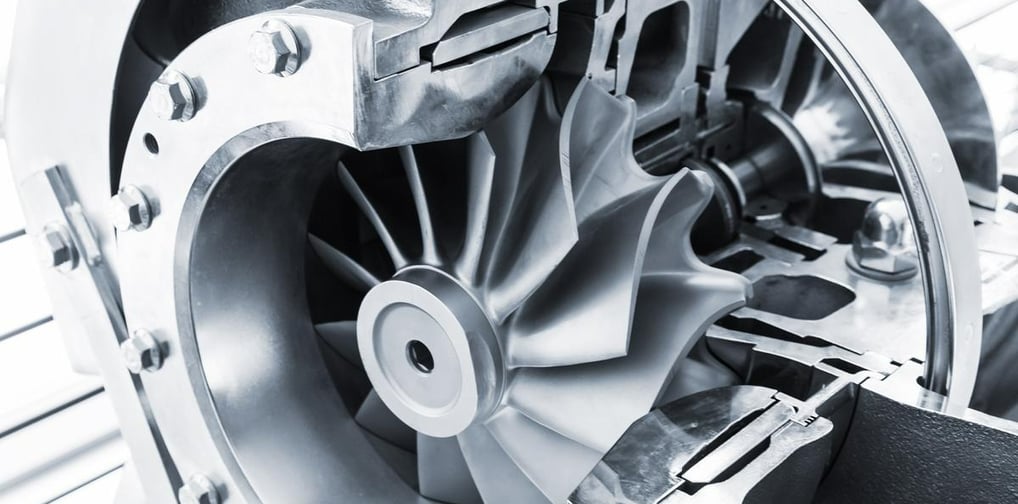We appreciate your time on our website. Please help us grow by sharing our site with your friends and colleagues. Thank you for helping us build a stronger community!
Maintenance of Turbocharger on Ships | Marine Engineering
Marine Geek
3 min read


Maintenance of Turbocharger on Ships
Turbochargers are vital components in marine engines, providing an efficient means of increasing engine power output. Turbocharger maintenance on ships is crucial to ensure the reliable and efficient operation of the engines, which in turn ensures the safety of the vessel and crew. In this article, we will cover the essential aspects of turbocharger maintenance on ships.
Types of Turbochargers
There are two types of turbochargers commonly used on ships – radial and axial flow turbochargers. The radial flow turbocharger is the more common type used in marine engines, and it works by using a series of vanes to direct exhaust gas onto a turbine wheel, which then drives the compressor wheel. The axial flow turbocharger, on the other hand, uses a series of blades to compress the air, which is then directed into the engine. Regardless of the type of turbocharger, regular maintenance is necessary to keep them in optimal condition.
Maintenance Schedule
A well-planned maintenance schedule is crucial to ensuring the longevity and reliability of turbochargers. The maintenance schedule should include regular checks, cleaning, and overhauling of the turbocharger components. The frequency of maintenance will depend on the type and size of the turbocharger, as well as the operating conditions of the vessel.
Visual Inspection
A visual inspection of the turbocharger components is the first step in the maintenance process. It includes checking the condition of the compressor wheel, turbine wheel, shaft, bearings, and seals. Any visible signs of wear and tear should be addressed immediately to prevent further damage. The inspection should also include checking for any loose bolts, leaks, or cracks in the turbocharger casing.
Cleaning
Cleaning of the turbocharger components is critical to ensure that they are free from debris, rust, or corrosion. The compressor and turbine wheels should be cleaned using a suitable cleaning agent and a soft brush to remove any dirt or debris. The turbocharger casing and other components should be cleaned using a high-pressure water jet, ensuring that the water pressure is not too high, which can damage the components.
Overhauling
Overhauling of the turbocharger should be carried out at regular intervals as specified by the manufacturer. Overhauling involves disassembling the turbocharger and inspecting all the components in detail. Any worn or damaged parts should be replaced, and the components should be reassembled using the correct torque values and alignment procedures. Overhauling of the turbocharger should only be carried out by trained and experienced personnel.
Oil and Air Filters
Oil and air filters play a critical role in the efficient operation of the turbocharger. Regular replacement of these filters is necessary to prevent the accumulation of debris, dirt, or dust, which can cause damage to the turbocharger components. It is essential to use the recommended filters specified by the manufacturer to ensure compatibility with the turbocharger.
Troubleshooting Turbocharger Problems
In the event of turbocharger problems, the following troubleshooting steps can be taken:
Loss of Power
If the engine loses power, it may be due to a malfunctioning turbocharger. The turbocharger should be inspected for damage or wear, and the air filters and intake ducts should be checked for blockages.
Increased Exhaust Temperature
If the exhaust temperature is higher than normal, it may be due to a malfunctioning turbocharger. The turbocharger should be inspected for damage or wear, and the air intake and exhaust ducts should be checked for blockages.
Excessive Smoke
If the engine is producing excessive smoke, it may be due to a malfunctioning turbocharger. The turbocharger should be inspected for damage or wear, and the air filters and intake ducts should be checked for blockages.
Conclusion
Turbocharger maintenance is a critical aspect of ship maintenance, and it requires a proactive approach to ensure that the turbocharger operates efficiently and reliably. Regular visual inspections, cleaning, and overhauling, along with the replacement of oil and air filters, are essential to maintaining the longevity and reliability of the turbocharger. By following a well-planned maintenance schedule and using the correct maintenance procedures, ship owners can ensure the safe and efficient operation of their vessels.
